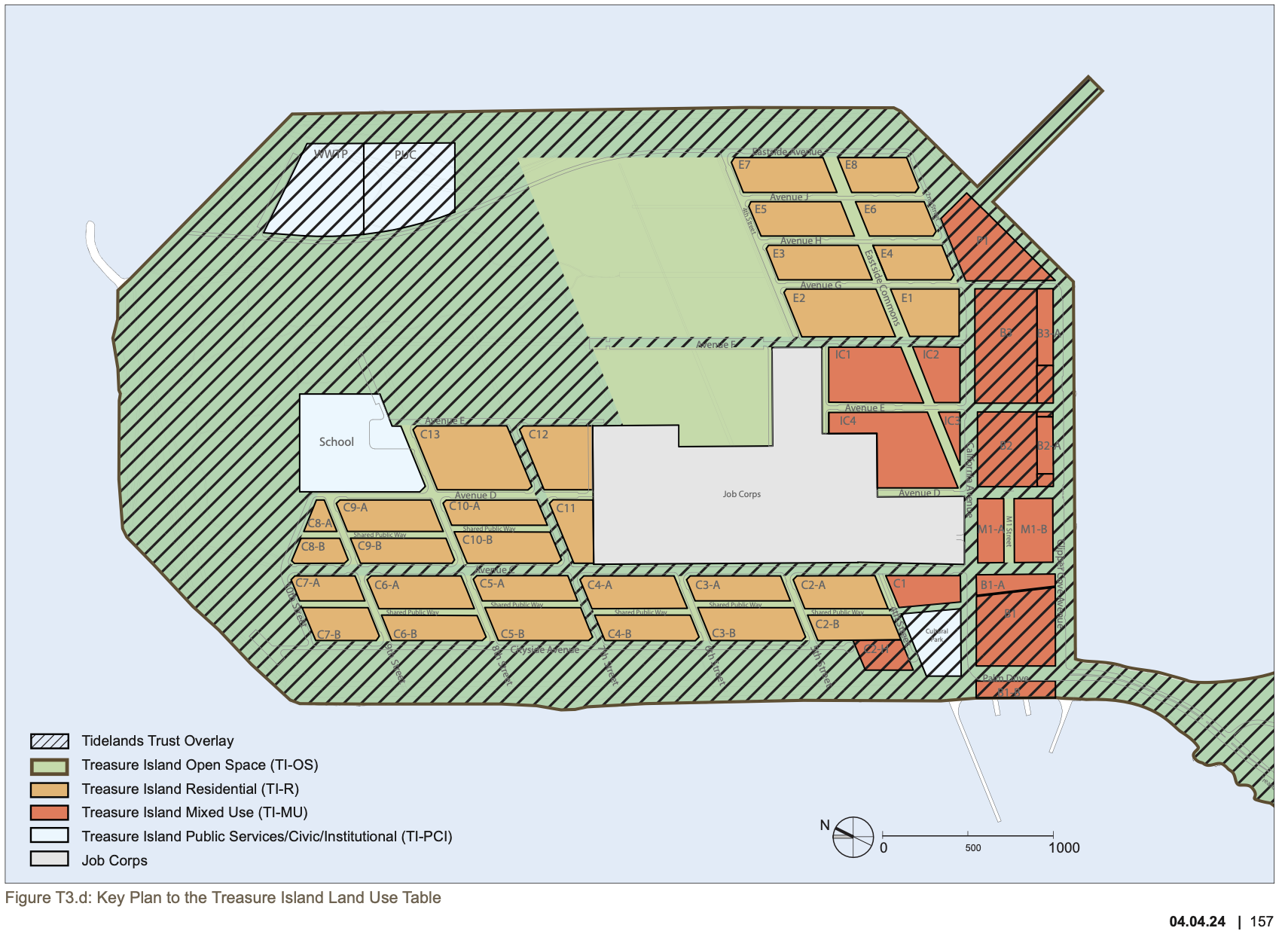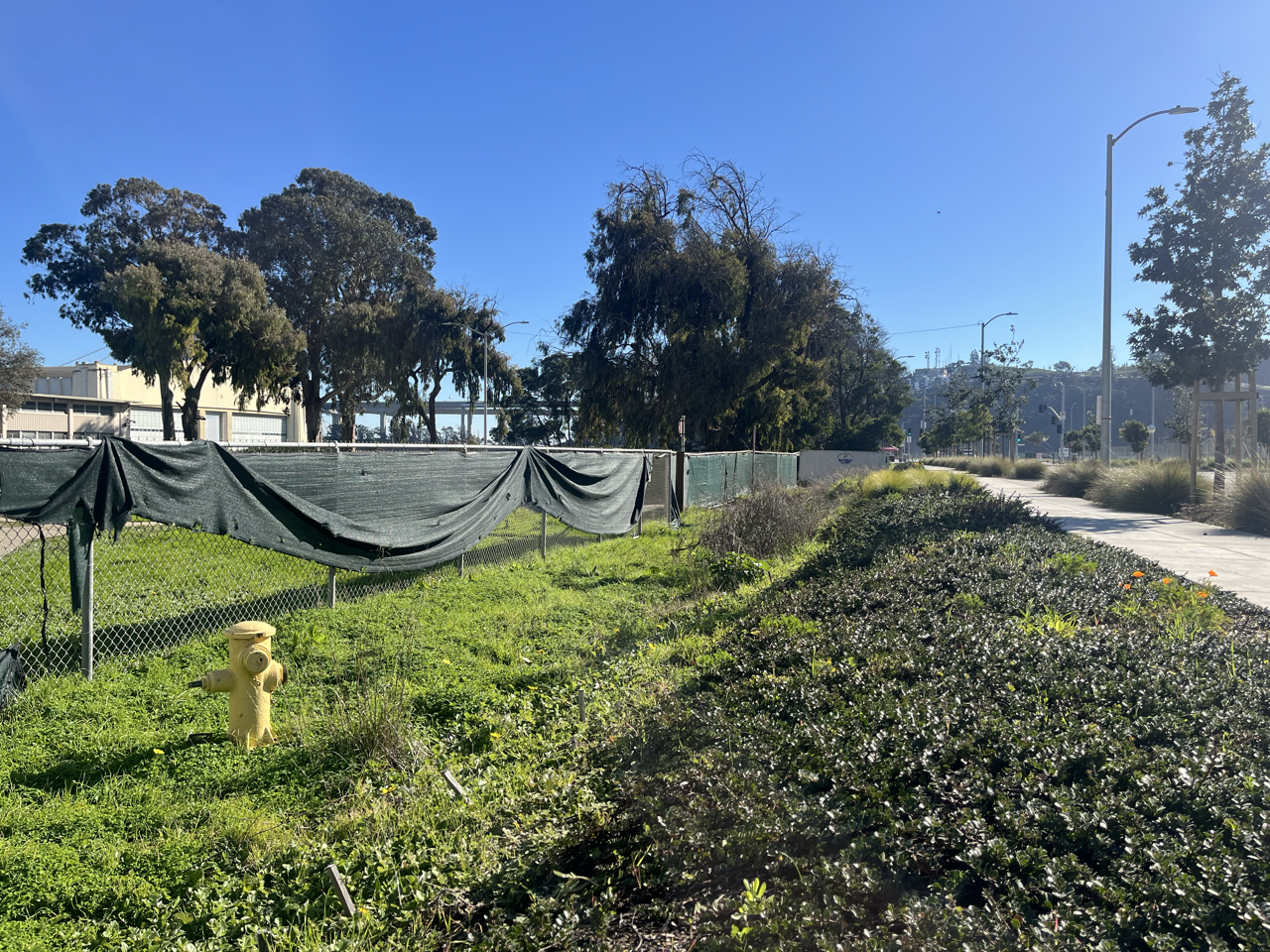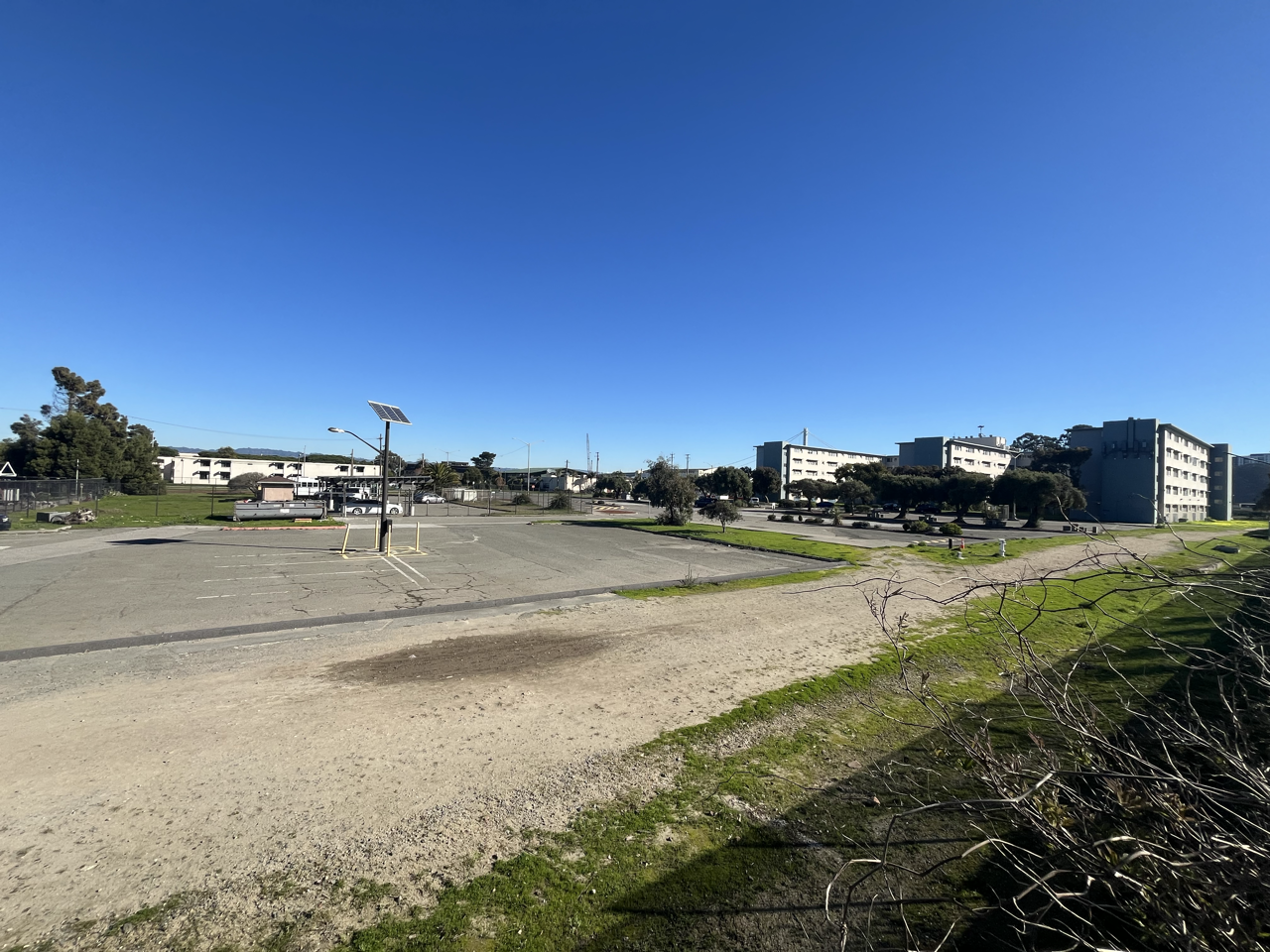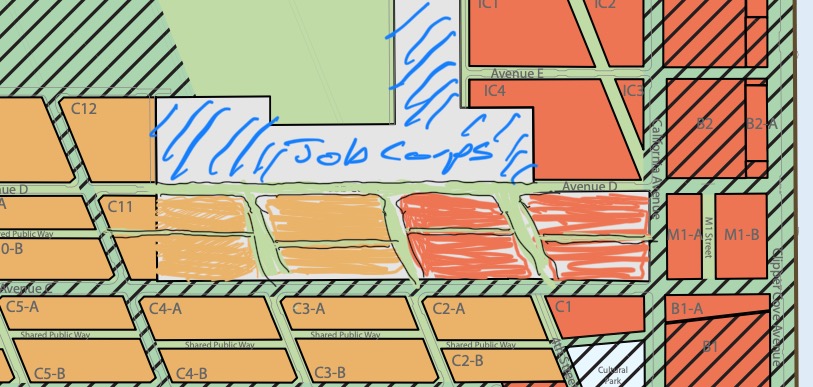Will the Job Corps Property be Included?
What is the Job Corps?
I had never heard of the Job Corps before I started following the Treasure Island development. In case you haven’t either, it’s a US Department of Labor program providing education and vocational training to young people that serves about 46,000 people per year. Notably, it was the first program launched out of Lyndon B. Johnson’s War on Poverty, but it also seems to fly largely under the radar with what coverage does exist being somewhat equivocal.
The Treasure Island Job Corps Center offers a variety of programs spanning culinary work, construction and electrical trades, healthcare, and more. Most students seem to live on the campus, which consists of repurposed ex-Navy structures.
Where is the Job Corps (on Treasure Island)?
It’s right in the middle. It’s also about 3 feet lower than the new development fronting it along Seven Seas Avenue.
More specifically, it’s in the central southwest portion of the island. Excluding future open space, this is the center of the new development. Here it is on a zoning map from page 157 of the Design for Development.
These photos show a little more of what the campus looks like from the perimeter.
How Might Including the Job Corps Property Change Things?
During their December 11, 2024 board meeting, the Treasure Island Development Authority (TIDA) discussed an Exclusive Negotiations MOU creating negotiations between TIDA, the DOL, and Treasure Island Community Development (TICD), which is the main private-sector developer of the island. You can watch the board’s discussion, and a presentation on the history and opportunities of the site via SFGovTV (click item 9).
To make a very rough estimate, developing the entire Job Corps property at a similar density to the rest of the development would yield about 4,000 homes. Of course, part of the deal is presumably to reconstruct facilities for the Job Corps. Let’s say they receive a purpose-built, modern campus taking half of the property. So that would leave room for 2,000 homes. If you extend the Cityside grid, it could consist of eight parcels like this:
TIDA staff discussed an even larger development footprint, stating that preliminary work shows that the Job Corps footprint could be reduced by about 80%, which means a number closer to 3,000 additional homes (SFGovTV around 1:32:00).
It makes a tremendous amount of sense to include the Job Corps property. It’s a chance to ensure the Job Corps receives modern infrastructure, including geotechnical and climate adaptations like joining the rest of the island at a stabilized, higher grade with new utilities. It also means more housing and other uses in a key location close to the island’s transit hub, hopefully reinforcing the island’s transit-first approach and enhancing walkability and connectivity within Treasure Island.
Of course this is only the first step towards inclusion of the Job Corps property, we will have to await a final determination while much work goes on behind the scenes.
Additional Thoughts
I’m excited for the possibility of 5,000 more new neighbors on the island. But just like there won’t be room for 20,000 cars, there definitely won’t be room for 25,000.
I expect that including the Job Corps property will drive additional scrutiny of the transportation policy. With no parking minimums, a 1.0 space per unit parking maximum, mandatory unbundling, and transit passes, it’s highly ambitious compared to most. Yet it doesn’t seem to be enough, with the most recent modeling projecting a 37% weekday and 17% weekend transit mode share in 2035, well below the program’s goal of 50%.
Notably, that modeling includes the island’s decongestion pricing program. Explicitly included in the environmental impact report and planning documents, the final policy has yet to be passed. I’m convinced the program is indispensable for realizing the vision of Treasure Island as a sustainable, equitable, and attractive place to live and work. The topic probably merits its own post, but as we watch a similar policy play out in New York I’ll just include a link to one of my favorite articles on the subject.



